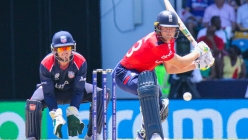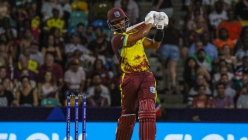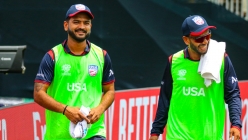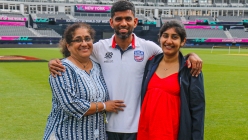Views
USA Cricket: 2019 CWC League Two UAE Tri-Series Tour Report Card Part 1 – Team Grades
2019 Dec 16 by DreamCricket USA
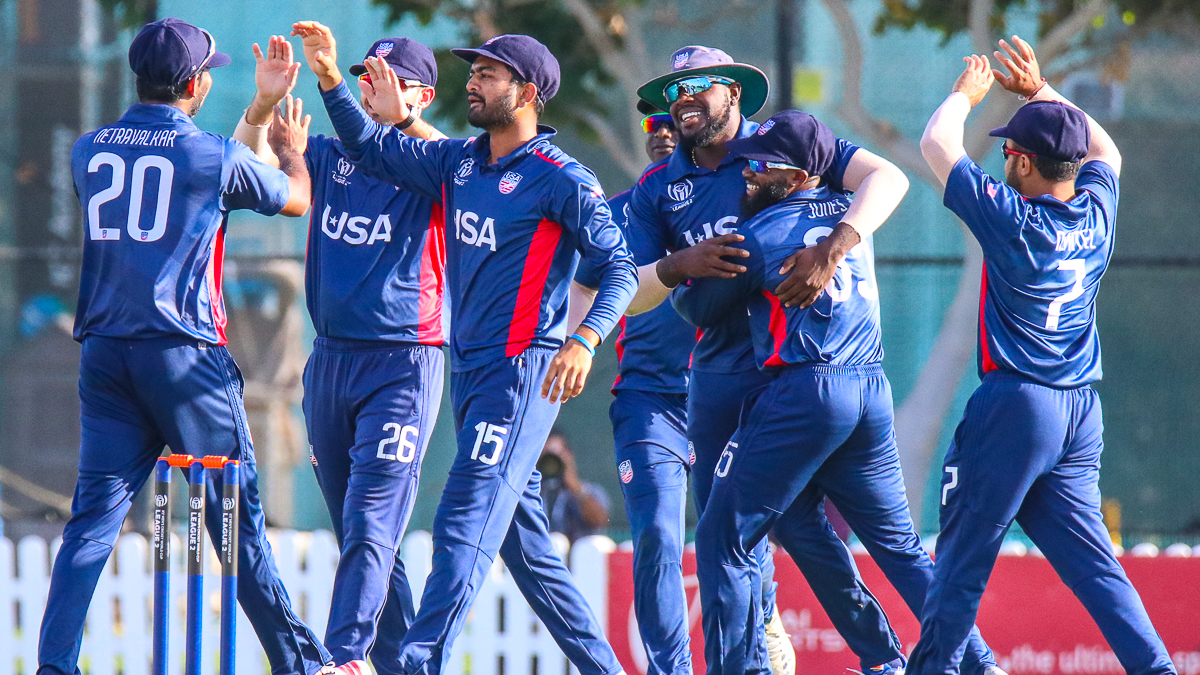
By Peter Della Penna (Twitter @PeterDellaPenna)Photo credit: Peter Della Penna
Part one of DreamCricket's tour report card review of USA's four-match tour of the UAE for a Cricket World Cup League Two tri-series against UAE and Scotland focuses on USA's team performance in four areas: batting, bowling, fielding and fitness.
Bowling: A-
USA’s bowling unit has traditionally been the team’s biggest strength over the years but rarely was that underscored in a single series than on this tour. The death bowling in particular in Sharjah was magnificent, restricting UAE to a below par total by wiping them out with 10 balls unused while Scotland went from a winning position – 45 runs to win off 33 balls with five wickets in hand – to all out in the space of 17 balls.
In the rematch with UAE in Dubai, they steamrolled a young batting lineup for 115 in a result that looked all the more impressive considering UAE cantered past Scotland on the same strip three days later. The bowling unit’s only blemish was their inability to close out another winnable position at the death against Scotland in the final match as the seventh-wicket pair of Josh Davey and Safyaan Sharif put on a 58-run stand to close out a gritty win for the Scots. But that result was more down to the fact that another below-par performance from the USA batsmen was finally exposed, having settled for 245 when they were 93 for 1 at the 20-over mark.
USA’s bowlers allowed five 50-plus partnerships in all, though none crossed 100. Four of those partnerships were compiled by Scotland, two each in Sharjah and Dubai. Only one of them – the aforementioned Davey-Sharif stand – proved to be backbreaking though. The average Powerplay score was also fairly well contained too by USA’s bowlers – 38/2, 44/2, 36/5, 29/1 – which often allowed USA to maintain aggressive fields with slips or other catching fielders in the ring beyond the first 10 overs of play, something that paid off on a few occasions rather than immediately sending four fielders out to the boundary as soon as the 11th over began.
USA’s pace bowlers were especially impressive in conditions which traditionally suit slow bowlers. Saurabh Netravalkar led the way with 10 wickets while Cameron Stevenson took nine. By contrast, USA’s spin bowlers underwhelmed, taking just six wickets collectively in conditions where Scotland and UAE’s slow bowlers thrived. It must be said though that the lack of wickets from spinners was partly a consequence of those new-ball breakthroughs when Netravalkar and others did extensive damage, as well as the fact that USA’s best bowler for much of the past year – Karima Gore – was injured and unavailable for the last two matches.
The most positive aspect of this performance on the bowling side is that there still appear to be areas where USA can improve. If they can perform like they did in the UAE and still have ceiling for growth, they are a side that is capable of contending with Netherlands and perhaps even lower-ranked Test nations.
Batting: B
USA’s unit produced five half-centuries in four matches in the UAE, as many as they did in eight matches during the Super50 tour of Trinidad. Aaron Jones and Monank Patel looked set for three figures in each of their knocks but couldn’t carry on while Xavier Marshall and Steven Taylor also looked in exceptional touch on the last day against Scotland before throwing away excellent starts. Having a ruthless streak in those situations is a trait that USA’s batsmen lack at the moment which separates them from the truly top-class Associate batsmen.
The strongest progression from Trinidad was USA’s ability to create and sustain partnerships though. USA had five 50-plus partnerships in the UAE, one of which was a 140-run stand between Monank and Jones that tied for USA’s 10th highest partnership for any wicket in their 50-over cricket history. Again, they only had four 50-plus partnerships during the entire tour of Trinidad. The Monank-Jones stand against Scotland in Sharjah was textbook in its simplistic efficiency. In a nine-over stretch from overs 21 through 29, they added 50 runs through nothing but singles. You read that correctly. Not a single boundary was struck, nor any two. But they refused to allow any pressure to build up due to extremely mature and patient rotation of the strike. It’s a blueprint that hopefully other USA players will copy in the future.
USA’s Powerplay approach gained confidence as the week wore on – 26/2, 34/2, 50/1, 53/1. The first two matches included instances in which two of the wickets fell when both Steven Taylor and Xavier Marshall were out first ball not offering a shot. It’s an indication that at times, two of USA’s most traditionally aggressive players are coming out with a timid mindset looking to survive the Powerplay rather than see it as an opportunity to intimidate and put pressure back on the opposition bowling unit, something that needs to be addressed going forward.
Fielding: B+
USA’s fielders missed six chances during the tri-series, four drops and two runouts. The costliest miss in terms of volume of runs was made by Cameron Stevenson at short midwicket against Scotland in Sharjah when Calum MacLeod was on 56 before going on to make 86. The costliest in terms of context may have been Monank Patel spilling a thick edge standing up to the stumps for Ian Holland’s medium pace when Josh Davey was on 8 and went on to finish 26 not out in a Man of the Match performance to clinch Scotland’s four-wicket win over USA in Dubai.
Collectively, USA’s misses cost them 76 runs at an average of 19 runs after the first missed chance, if the batsman was dismissed at all. With the exception of a soft drop by Stevenson at short midwicket when Michael Jones was on 36 in Sharjah, the other chances were all at least an above average degree of difficulty. By comparison, USA’s opponents gave USA six letoffs when USA was at bat that turned into 64 extra runs for USA, or an average of 21.33 after the first miss if a batsman was dismissed at all. Looking at the raw numbers, USA wound up minus-12 in terms of plus/minus on fielding differential.
But looking at the broader picture of USA’s performances, their overall fielding was excellent for the standard they will come across in CWC League Two. Steven Taylor in particular stood out for a pair of brilliant takes at slip and backward point in Dubai. While there were a few fumbles along the ground here and there, the ground fielding was generally of a high standard. Players like Xavier Marshall, who struggled in the field on some of USA’s recent tours, were placed into positions where they were better utilized for the benefit of themselves and the team. USA’s excellent bowling performance was aided by the support they received from their fielders, which was to a higher standard than usual despite the injury to Karima Gore, which knocked him out of the last two matches. If they can continue to field like they did in the UAE throughout the rest of the League Two competition, there’s no reason why USA can’t challenge for the top spot.
Fitness: B
The dry heat conditions were nowhere near as oppressive as the humidity that USA experienced in Trinidad. USA generally looked fitter in the field and at the crease as a result. If Karima Gore hadn’t gotten injured, USA most likely would have played an unchanged XI for all four matches. That is a testament to the enhanced fitness levels of someone like Rusty Theron in particular, who has had injury issues over the years, including in USA’s opening tri-series in Florida in September.
Still, a few lingering issues remain. Akshay Homraj’s hand injury in the final match against Scotland in Dubai brought more attention to the struggles both he and Monank Patel experienced behind the stumps throughout the tour of Trinidad, with neither one showing a consistent ability to last an entire innings behind the stumps without some sort of fitness issue forcing them off. Aside from that, Elmore Hutchinson was a near constant presence on the field as a substitute filling in for one person or another throughout the tour. Monank, Xavier Marshall and Aaron Jones were all off the field at various intervals, something that should not be entirely surprising from the track record of the first two in particular.
On the batting side, fitness did not appear to be an issue in the inability of Jones or Monank to reach their centuries. Their 140-run stand was full of running especially when there was no boundary for a nine-over stretch. But Taylor’s shot to get out just after reaching his fifty against Scotland was reminiscent of his dismissal in Trinidad after crossing a half-century, someone whose stamina looks like it wanes if he has been at the crease for 25 overs. Though he has shed some weight in recent years which has drastically improved his fielding, his batting fitness and endurance is still an area that can improve both for himself and the team.
[Views expressed in this article are those of the author, who was present at all of the team's matches on tour in the UAE, and do not necessarily represent the views of DreamCricket management. If you have different views or opinions, we respect those views and urge you to provide your feedback, both positive and negative. Feel free to respond to the author via Twitter @PeterDellaPenna.]
